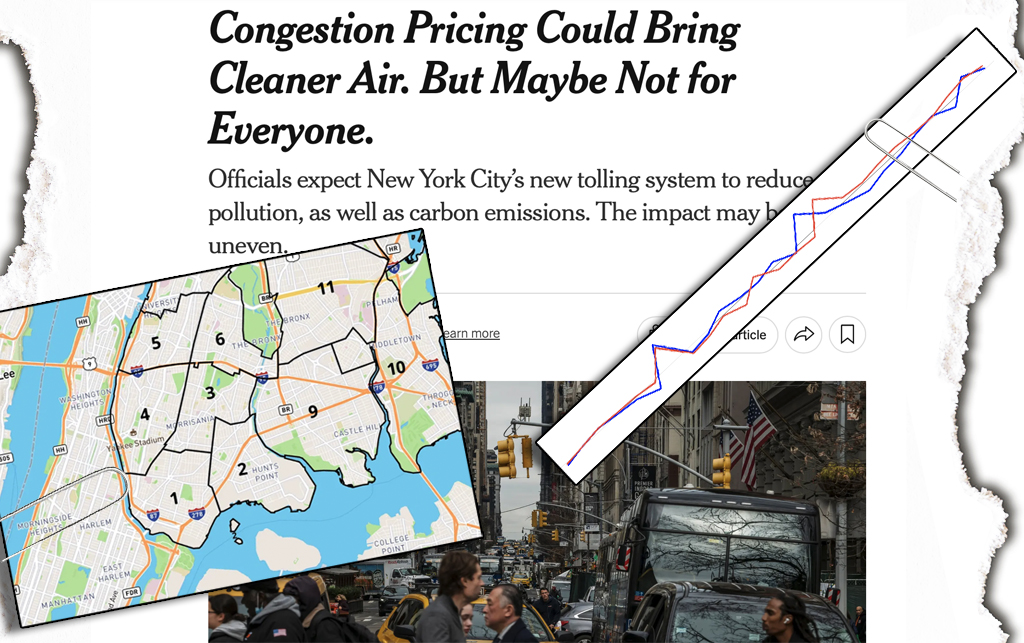
"Breaking news analysis! We now have empirical evidence to dispel last year's widespread speculation that congestion pricing would worsen congestion and pollution in the southernmost section of the Bronx. It has not, the data show. You remember the dire predictions, of course: During 2024 and even after congestion pricing's launch in early January, 2025, some environmental groups warned of increased traffic and higher emissions in the southernmost Bronx. The New York Times covered it. So did the environmental news source Inside Climate News."
"But even before then, "Gridlock" Sam Schwartz and I were positing how congestion pricing could just as easily alleviate traffic not just in Mott Haven and Port Morris, but throughout the Bronx. Some truck journeys that previously detoured around Manhattan and through the South Bronx might instead proceed through, as reduced Midtown gridlock made cross-Manhattan routes more attractive to truckers. Thinner traffic streams into the congestion zone originating in Westchester and Connecticut could diminish "rat-running" on local roads by unsnarling area highways."
Six months of post-launch data show congestion pricing did not worsen traffic or pollution in the southernmost Bronx. Earlier 2024 warnings forecast increased traffic and emissions, prompting extensive media coverage. Alternative analysis proposed that congestion pricing could reduce traffic in Mott Haven, Port Morris, and across the Bronx by rerouting truck journeys through Midtown and reducing rat-running from Westchester and Connecticut. The southernmost Bronx is traversed by the Major Deegan and Bruckner expressways and three major bridges. No agency tracks neighborhood-level vehicle miles traveled, but for-hire vehicle trip data and vehicle speeds can indicate traffic changes. Todd Schneider was consulted to analyze the data.
Read at Streetsblog
Unable to calculate read time
Collection
[
|
...
]